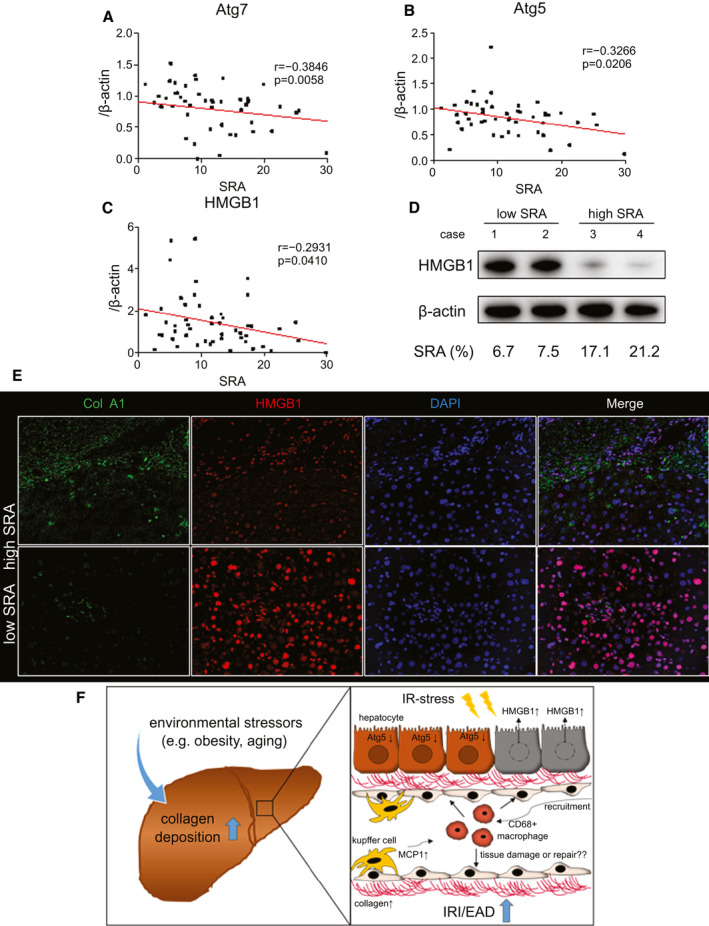FIG. 4.

Hepatic SRA negatively correlates with Atg7, Atg5, and HMGB1 levels in human LT. Forty‐nine human LT biopsy samples were collected and analyzed at 2 hours postreperfusion. (A,B) Pretransplant hepatic SRA was correlated negatively with posttransplant western‐assisted expression of autophagy‐related proteins (Atg7, P = 0.005; Atg5, P = 0.020). (C) SRA was negatively correlated with HMGB‐1 expression (P = 0.041). (D) Representative HMGB1 expression profiles in high‐ versus low‐SRA cases (case 1/2, low SRA; case 3/4, high SRA). (E) Representative immunofluorescence staining for type 1 collagen and HMGB1 (n = 2 per group; original magnification, ×200). (F) Proposed mechanistic scheme of IR‐related hepatocellular injury in a high‐SRA donor liver. Environmental factors, such as obesity or aging, increase the intrahepatic collagen deposition. High‐SRA livers fail to induce autophagy against IR stress leading to the hepatocellular damage with enhanced HMGB1 release. IR stress in high‐SRA livers releases a higher amount of MCP1 and recruits CD68‐positive macrophages.
